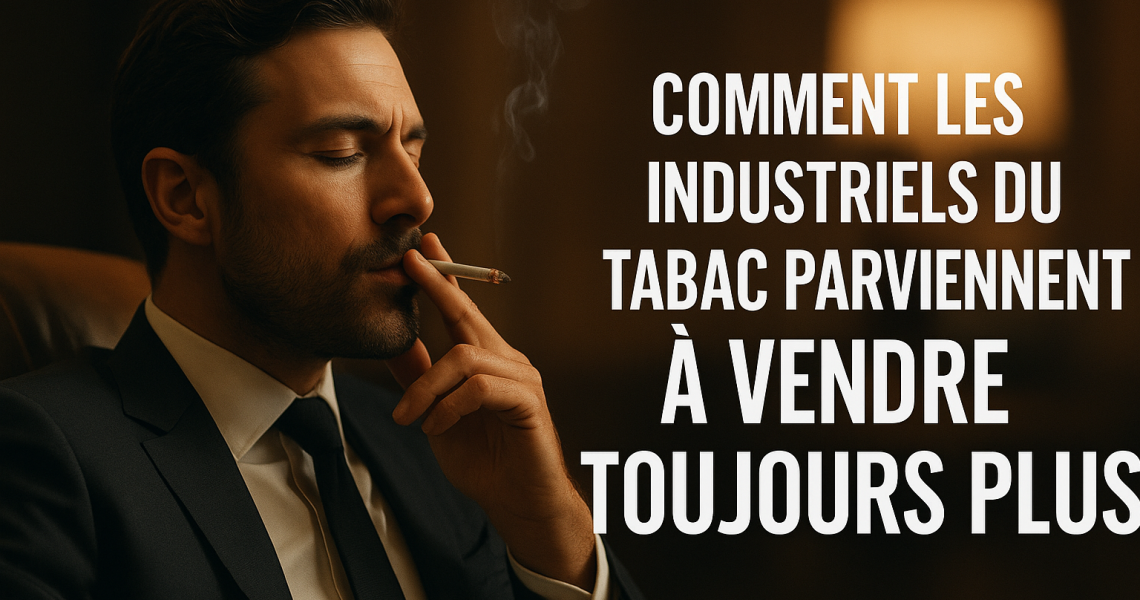It’s an intriguing paradox: while cigarette prices are soaring in France, overall tobacco consumption remains unabated. Why? Because the tobacco industry is always one step ahead. The system is well-oiled and efficient. Deciphering a mechanism where, whatever happens, the industry comes out the winner.
🚬 A meticulous sales strategy: marketing in all its forms
For decades, the tobacco giants have invested fortunes in studying smokers’ behavior. Even though direct advertising is banned in many countries, they know how to adapt. Attractive packaging, premium brands, “light” cigarettes, flavored capsules… every innovation is aimed at renewing interest, seducing young people or retaining older consumers.
Packaging, in particular, has become a powerful loyalty-building tool. Even in countries like France, where plain packaging is mandatory, some brands play on materials, texture or subliminal messages to maintain their mental presence. Nothing is left to chance.
🧠 Influencing without appearing: the art of indirect communication
Tobacco manufacturers have understood one essential thing: it’s not necessary to appear head-on to exist in the consumer’s mind. Today, visibility is achieved through social networks, films, TV series, influencers… where the younger generations get their information and identify themselves.
Some “influencers” talk about tobacco as a lifestyle, without even being officially sponsored. This phenomenon contributes to the normalization of the gesture, despite prevention campaigns. And of course, manufacturers observe, analyze and adjust their levers of action.

📉 Price rises in France? A detail for manufacturers
You’d think that the steady rise in the price of a pack of cigarettes in France – now over €12 in some cases – would discourage smokers. In fact, it’s a powerful incentive to circumvent the system.
More and more French consumers are buying from abroad: Spain, Belgium, Luxembourg, Italy… In these countries, taxes are lower, and packages sometimes cost half as much. Some go so far as to plan their vacations or travel around this “tax advantage”.
Result: consumption remains stable, smokers continue to buy, but the profits go elsewhere… except for the tobacco companies, who continue to sell just as much, wherever they are.
💼 Manufacturers remain the big winners, whatever happens
This is where the system becomes formidable. Whatever the local political decisions (price increases, restrictions, anti-smoking campaigns), the tobacco multinationals adapt their strategy. They are present everywhere, in every channel, in every country.
They have diversified their products (rolling tobacco, heated tobacco, electronic cigarettes), their markets (countries with more flexible tax regimes) and their targets. In France, they may be losing direct market share, but they are making up for it in border areas, or through other nicotine products.
At the same time, they invest in seemingly virtuous structures: research, weaning, “healthy” innovation. This enables them to position themselves as players in public health, while continuing to sell tobacco.
📺 ▶️ [HOW THE TOBACCO INDUSTRY WORKS].
🔍 A system that’s hard to fight, but not invincible
The real question today is no longer just, “How do I quit smoking?”, but “How do I cut the rug out from under a perfectly oiled system that fuels addiction?”
The solution will not come from a simple price increase. We need to rethink our global approach, acting at source, demystifying manufacturers’ seduction strategies, and providing smokers with effective support in finding concrete cessation solutions.
💬 Conclusion: who really benefits from your addiction?
As long as consumption remains constant, the tobacco industry wins. Whether you buy your cigarettes in France, Spain or on a foreign site, the money always goes back to the same source. And this despite sincere public health efforts.
This article, combined with your video, can be an eye-opener for many readers. Because understanding how this system works is the first step towards breaking free from it.
